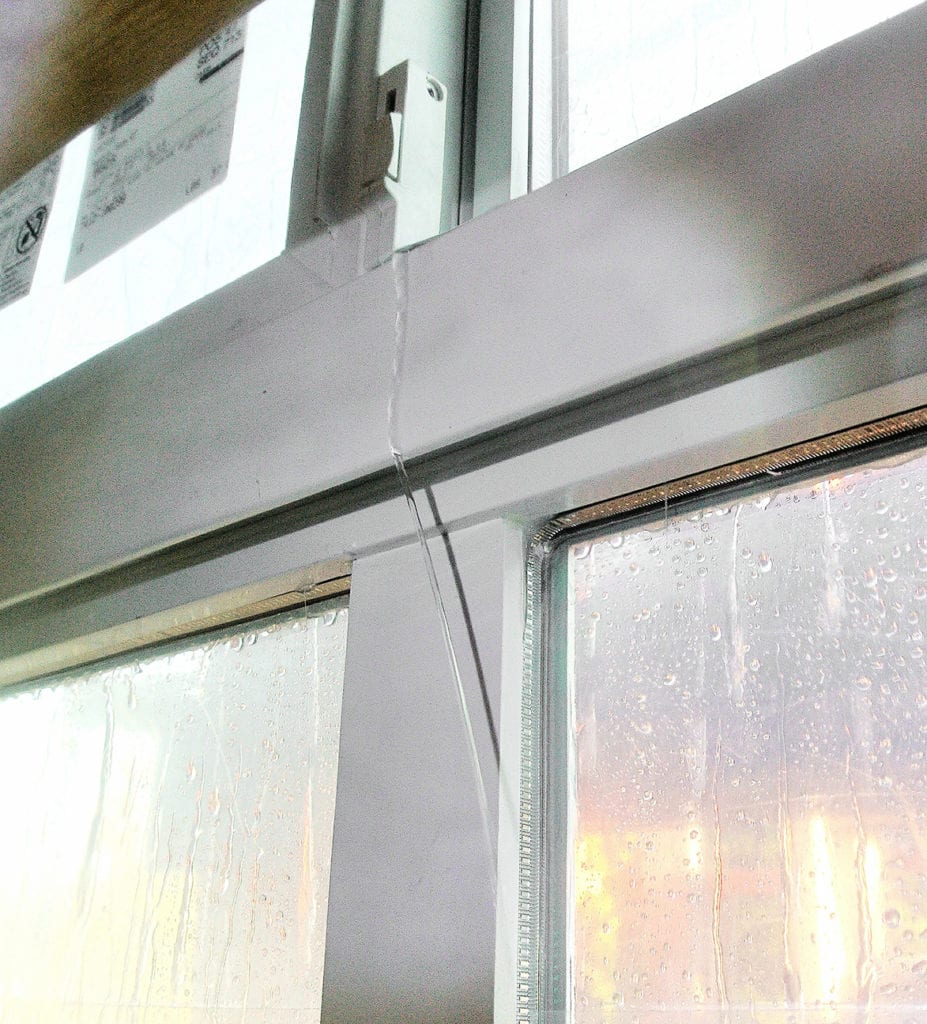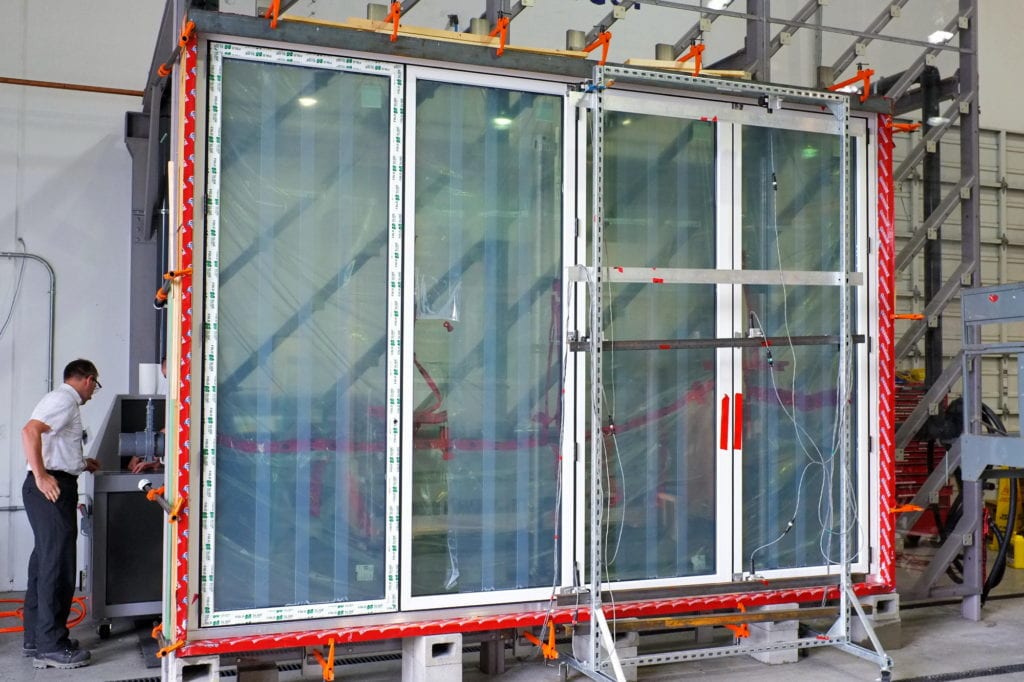Note: The public review has now ended.
NAFS, the North American Fenestration Standard, is jointly published and maintained by three associations: CSA in Canada, and AAMA and WDMA in the United States. On December 7, CSA announced the start of a public review of the latest edition, giving the Canadian industry and stakeholders the opportunity to review and comment on the proposed changes to the standard. (The AAMA and WDMA associations will conduct separate reviews on behalf of their respective members.) CSA has requested its committee members and industry associations to publicize this review opportunity.
The public review gives industry stakeholders and affected parties the opportunity to examine proposed changes and to respond with comments of approval or requests for amendment. Review comments will be reviewed by the CSA Technical Committee on Performance Standards for Windows (CSA A440) before the committee votes on accepting this edition, with or without changes to this draft.
[This article was last updated on December 17, 2016.]

CSA A440 committee meeting Nov. 2016
A few notable changes in NAFS-17
In my view, the NAFS-17 public review draft is an evolutionary upgrade to NAFS-11, catching up to changing times, reflecting progress in harmonizing Canadian and American test requirements, and responding to new products in the fenestration market. Though the document is quite extensive and should be reviewed in full, below I point out a few of the more notable changes that caught my attention.
As this is not the final version of the NAFS-17 standard, in this article, all references to “NAFS-17” should be understood as referring to the “CSA NAFS 2017 Public Review Draft”.
New products now covered by the standard
Two entirely new product types have been added to Table 4.1 in Clause 4 of NAFS-17.
Parallel opening windows
NAFS-17 introduces the parallel opening window (POW) product type, which now has defined Performance Class attributes.
Folding door systems
NAFS-17 introduces the folding door (FLD) product type which now has defined Performance Class attributes for classes R, LC and CW. Figure 6.2 identifies five possible operating configurations of hinged and sliding panels, and which configurations are qualified by a particular test. Testing of a single 3L/1R or 1R/3L specimen appears to qualify all possible operating configurations, but is not to be regarded as “all-inclusive”. The test specimen does not need to reflect the maximum number of panels possible to be included in such a system: “The number of panels in any qualified configuration shall be permitted to exceed the number of panels in the tested configuration.” The gateway test size in Table 12.2 appears to be based on a two-panel door, and would presumably need to be proportionately wider to qualify a door with three or four panels. This may need to be clarified.
Greater harmonization between Canadian and American test requirements
NAFS-17 has harmonized operating force requirements for windows and sliding doors of all Performance Classes, with the values presented in Table 5.4 (Class R and LC), and Table 7.3 (Class CW and AW). This harmonization will likely be welcomed by manufacturers on both sides of the border.
There has also been some progress on harmonizing air leakage requirements. For Class CW and AW windows and sliding doors, there is now a single table (Table 7.2) of air infiltration/exfiltration requirements. For Class R and LC windows and sliding doors, and for side hinged doors of all Classes, there are still separate Canadian and American air leakage tables.
Side hinged door hardware testing changes
Two issues related to the locking hardware commonly used with side hinged doors are now formally addressed in the standard
Excluding locking hardware from water testing
From the time side-hinged doors began to be tested to NAFS-08, it has been known that during laboratory water tests, doors typically leak through door locking hardware, particularly the door cylinder. While this behavior is observed in a lab setting, this phenomenon has not been a door performance problem in the field. It merely reflects the fact that the lab test method subjects door locks to conditions that are not encountered in their service environment. While there are a very few door locksets that do not leak under these conditions, they are not available in the variety of options that the market expects.
This problem has been discussed at industry association meetings, including the CSA Technical Committee on Performance Standards for Windows and the Joint Document Management group, and several proposals have been advanced to address it. While the exclusion of door locking hardware is commonly practiced and is documented in lab test reports, until now there has been no formal recognition of the need for this practice within the standard.
To distinguish doors that achieved their ratings with the hardware shielded from water, NAFS-17 introduces several new product designations in Table 4.1 of Clause 4. These designations add an X to the abbreviated product type designations, as shown below:
- Dual-action side-hinged door, hardware not water tested (DASHDX)
- Folding door, hardware not water tested (FLDX)
- Side-hinged door, hardware not water tested (SHDX)
- Limited Water side-hinged door, hardware not water tested (LWSHDX)
- Limited Water dual-action side-hinged door, hardware not water tested (LWDASHDX)
- Limited Water folding door, hardware not water tested (LWFLDX)
The standard still permits doors to be tested with the hardware fully exposed to the water spray.
Qualifying site installed door hardware
NAFS tests window and door products as systems whose tested performance ratings depend on use of the same specific components that were installed on the test specimen. Properties such as wind load resistance depend on the structural properties of hinges and locking hardware. In the side hinged door industry, it is common to leave the selection of hardware components to the specifier, or to the end user, and doors are often shipped to the jobsite without hardware, or with hardware selected by the customer that differs from the hardware used to obtain the test ratings. This leads to the possibility that the installed door product may not perform the same way as the lab test specimen.
To address this, NAFS-17 adds the following clarification in Clause 11.2.6: “…side-hinged door locking/latching hardware is generally an aftermarket installation, and beyond the control of the door system manufacturer. Consequently, it shall be the responsibility of the specifier of the aftermarket hardware to demonstrate water penetration resistance and a structural load performance rating equal to or greater than the water penetration resistance level and Performance Grade (PG) of the side-hinged door system in which it is installed in accordance with AAMA 930.”
Changes related to testing and labeling
Test specimen installation
NAFS-17 continues to assert that the intent of the testing is not to replicate a typical field installation of the product, nor to qualify its anchoring method. However, updates to the instructions in Claues 9.2.5 add some new provisions, several of which I have reproduced and italicized below:
The air, water, and structural tests required by this Standard/Specification are performed on test specimens installed in a laboratory test fixture that permits installation in accordance with the manufacturer’s documented instructions which shall be consistent with the perimeter sealing and anchoring practices shown in published field installation details that are specific to the product being tested.
For all applicable testing carried out in accordance with this standard/specification, it is not acceptable to install the product in the laboratory test fixture in a manner that prevents observation for potential water leakage around the perimeter of the product framing.
These test protocols, which form part of this Standard/Specification, shall take precedence over the manufacturer’s installation instructions/details,
where those instructions contradict these requirements.
Mullion assembly testing and labeling
NAFS-17 requires mullion assemblies to be tested and rated with Performance Class attributes in addition to air-water-structural performance. There is now both a Primary and Secondary Designator defined for labeling mullion assemblies. Previously mullion assemblies were subject only to the design pressure (DP) rating requirements of AAMA 450.
Casement sash hardware testing
Clause 9.3.6.5.2 has been renamed from “Sash and hardware load test” to “Casement hardware load test”, with a new loading diagram and revised testing requirements for testing the torsional rigidity of the sash.
Changes to component and material requirements
Salt-spray resistance required for exterior fasteners
Fastener requirements in Clause 11.3 have been revised, and all externally exposed fasteners shall be tested to ASTM B117 salt spray resistance, for a minimum of 96 hours using visual inspection with no corrosion observed.
Window opening control devices (WOCDs) and window fall prevention devices
Clause 11.2.2 contains more specific language concerning the standards applicable to these devices.
Vinyl quality requirements clarified
Vinyl test requirements in Clause 10.3.4 (now 10.3.3) now clearly distinguish non-structural components from structural components, with similar changes for cellular vinyl in the following clause. Laminated finishes for vinyl and cellular vinyl are now required to comply with AAMA 307.
Reinforced thermoplastic and ABS framing materials
The term “fiber reinforced PVC” has been dropped in favor of “reinforced thermoplastics”, and the ABS material requirements have been deleted.
Wood moisture content
Clause 10.3.2.1 now has new User Guide commentary on how moisture content is to be tested. Handheld devices are considered not sufficiently accurate, and a green weight minus dry weight method is recommended for “more definitive measurement”.
Wood flush and molded fiber doors
Clause 10.3.3 addressing the testing of these products has been deleted.
Annex C, Standards Progression
A useful table summarizes the major changes from the 1997 version (before it was NAFS) to the 2011 version of the standard.
Is there any point in participating in a public review?
I’m sure many people ask themselves this question. Is there any point in participating in a public review? Will your voice be heard? Will your opinion count?
As a member of the CSA committee, I would say the answers are yes, yes, and it depends—in that order.
First, you should realize that the U.S.A./Canada Joint Document Management Group, composed of senior members representing CSA, AAMA, and WDMA, has been meeting for several years to prepare this latest edition of the standard. Task groups and committees within each organization have considered numerous additions and changes requested by member organizations to address new product types, clarify the intent of the standard, update referenced standards, and address concerns raised by manufacturers as well as issues related to interpretation and application.
The proposed amendments in this version have therefore undergone significant discussion and review, so commenters need to consider that their concerns may have already been discussed and considered.
But, no standards creation process is perfect, and it is possible for “insiders” deeply engaged with the standard to fail to appreciate the way it affects users of the standard. These “users” include fenestration manufacturers and their suppliers; architects, engineers and specifiers; testing and certification organizations; building officials, and even the public. In the course of researching this article, I have compiled my own list of comments, requests for clarification or justification, and will propose amendments to the draft.
So yes, “insiders” need to hear from those outside the process, and it has been my experience that all reasonable and actionable comments are respectfully considered by the CSA Technical Committee on Performance Standards for Windows.
Will NAFS-17 ever appear in Canadian Codes?
This is a good question. The 2015 National Building Code references NAFS-11 (NAFS 2011). It is possible for the National Code to be updated midterm, between now and the publication of the 2020 NBC, but whether that occurs—or when it might occur—is not easy to predict. It is likely to be referenced in the 2020 NBC, unless the 2020 edition of NAFS is completed before the 2020 NBC is finalized.
That; however, does not mean NAFS-17 is not relevant to Canadian construction industry participants. If industry stakeholders strongly support NAFS-17 over NAFS-11, the likelihood of a midterm adoption by the 2015 NBC would be likely, and the innovations in NAFS-17 will likely carry forward into future NAFS versions. Any concerns stakeholders have about the 2017 edition should be addressed now—make sure your voice is heard.


